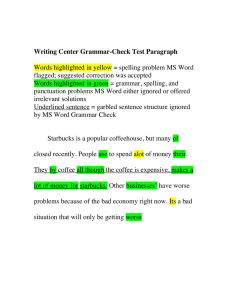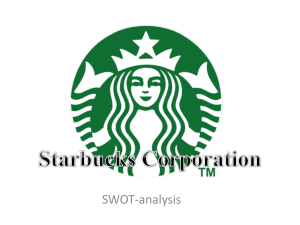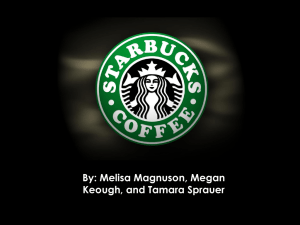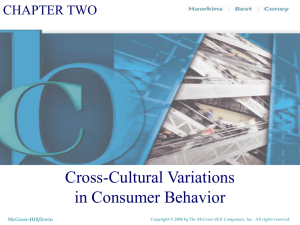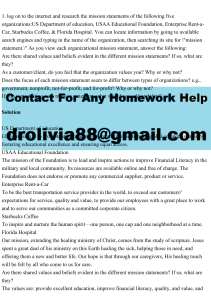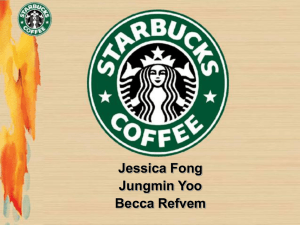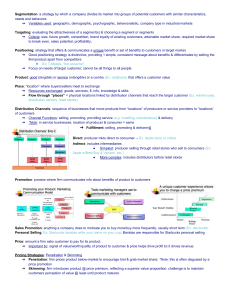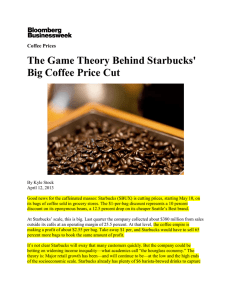Starbucks Corporation
advertisement
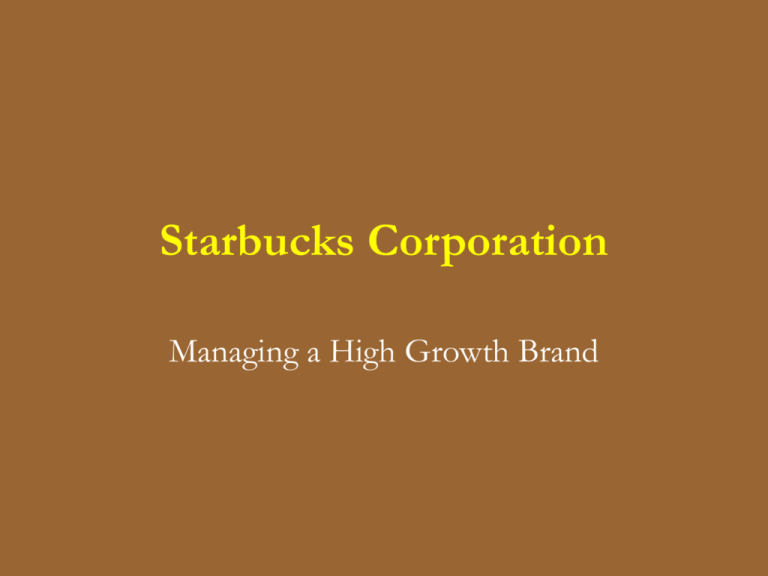
Starbucks Corporation Managing a High Growth Brand Overview • In 2002, had 5,400 stores in North America, Latin America, the Pacific Rim. Europe and the Middle East • Growth: – open one store per day (average) – revenue 2001=$2.1 billion – Licensing partnerships Creating the Transformation • Opened 1971 in Seattle’s Pike Place Market with European coffee in a coffee consumption declining U.S. • Howard Schultz – CEO 1982 – preserve core values and expose new customers • Coffeehouse model – elegance of European coffeehouse culture but familiar enough for broad appeal – Italian feel with American casual warmth – Wanted it to be the “Third Place” for people The Starbucks Team • • • • • • Recruited management from other areas State of the art facilities Flavor Lock bags Training of employees emphasized Employees: insurance & stock options “Do whatever it takes to please the customer as long as it is moral, ethical and legal” Growth Plan • Phase 1: Pacific Northwest & Chicago, LA, San Francisco, NY and DC • Phase 2: Boston & Atlanta (regional prefs) • Phase 3: Florida & Hawaii (warm climates) • Phase 4: International (Tokyo) • All owned and operated by company (no franchises) to control the brand • Hub markets & spoke markets Joint Ventures and Partnerships • Host Marriott – airports, hotel lobbies, malls and convention centers • United Airlines – 2200 daily flights • Others: Nordstrom, ITT/Sheraton, Westin, Holland American Cruiselines, Barnes & Nobles and Albertson’s. • Pepsi (Frappuccino) and Dryers (ice cream) • Kraft for supermarket distribution Other Partnerships • Johnson (as in Magic) Development Corporation – Urban Coffee Opportunities • Alliance for Environmental Innovation – less wasteful carryout cup • Conservation International – Shade Grown Mexican coffee • Fair Trade certified coffee – pressure from organization • Starbucks Foundation charity – literacy programs & Starbucks Holiday Angels Initial Growth Results • 1990s – customers averaged 18 store visits/month with expenditure of $3.50 a visit. • One a day latte plus scone - $1400/year • Annual growth rate of sales and profits exceeding 50% through the 1990s. • And then it slowed down – sales flattened and new store openings fell behind schedule, ice cream and Frap did not meet sales expectations. Now What?? The Plan • Core business – Wider scope of food and drinks – Tazo Teas – Joe Magazine • Global Expansion • Internet Developments – Direct mail catalog – Oxygen media for women Results • Investors felt the internet strategy was to far from core business and diluted focus. Stock price dropped. So they revised the web strategy to focus on “products” rather than creating a community • Joe failed and was scrapped • Same store sales picked up Challenges • What are the keys to Starbucks’ brand equity? • Did they go too far with product extensions? Not far enough? • Evaluate their strategies, especially the growth strategies.


